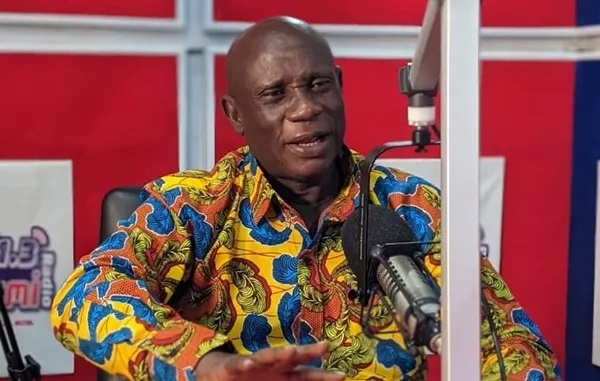How And Why The Future Of Geopolitics Is Playing Out In Southeast Asia

KUALA LUMPUR, MALAYSIA - 2025/05/27: Malaysia's Prime Minister Anwar Ibrahim (center) seen with ... More Mohamad Hasan the Malaysia foreign minister (Left) and Tengku Zafrul Aziz Minister of Investment, Trade and Industry of Malaysia (right) while giving a speech for the 46th ASEAN Summit and related summit during a press conference at Kuala Lumpur Convention Centre. (Photo by Faris Hadziq/SOPA Images/LightRocket via Getty Images)
SOPA Images/LightRocket via Getty ImagesFor Malaysia, 2025 was supposed to be the year it demonstrated it could lead not just at home but across one of the world’s most diverse and diplomatically fragile regions. As chair of the Association of Southeast Asian Nations (ASEAN), it had the rotating responsibility of setting the agenda, shaping regional priorities and projecting leadership in a moment of rising global uncertainty.
It was an opportunity Prime Minister Anwar Ibrahim appeared to embrace. When I met him last year, he spoke of regional leadership as both duty and opportunity. Speaking in Vientiane at the ASEAN Summit late last year, he laid out a vision centered on digital transformation, economic resilience and collective reinvention. The theme for the year, “inclusivity and sustainability,” signaled a desire to lead with both principle and pragmatism.
Now, six months into the chairmanship, as the summits settle into memory and the press statements fade from view, a more complex story is emerging. Malaysia’s leadership of ASEAN has produced meaningful economic momentum but also exposed the structural limitations of the organization itself. The challenge for Anwar was not only steering a multilateral ship through stormy waters but doing so while ASEAN’s engine showed signs of stalling.
On the economic front, Malaysia’s chairmanship has been one of the most active in years. Under Anwar’s leadership, ASEAN prioritized the long-delayed Digital Economy Framework Agreement (DEFA), a sweeping initiative to create harmonized rules around e-commerce, digital payments, cybersecurity and data governance. DEFA had been under negotiation for years but Malaysia made it a political priority, pushing through a shared roadmap and narrowing gaps on standards.
This approach aligns with Joseph Nye’s conception of soft power leadership, where values, attraction and institutional influence are used rather than coercion or capital to shape preferences. In a region of contrasting regimes—democratic, authoritarian and hybrid—Malaysia acted as an agenda-setter through persuasion, embedding liberal economic coordination as a regional value.
DEFA also illustrated what liberal institutionalism calls functional spillover. By integrating economies through digital infrastructure, Malaysia aimed to generate momentum that could extend into greater political cohesion. With U.S. and China competition accelerating and global trade patterns shifting, ASEAN’s digital integration has become a lifeline for small and medium enterprises in Indonesia, Vietnam, the Philippines and Malaysia itself. The goal, as articulated by Anwar, was to turn ASEAN’s economic interdependence into strategic alignment.
Even in its successes, the chairmanship underscored a difficult truth. The easier ASEAN’s agenda, the less strategically transformative its impact. Digital harmonization is welcome but also the least controversial path. It does not provoke and that is partly why it progresses. There were few risks taken and even fewer uncomfortable decisions made. That was by design. It was also a tacit acknowledgment of what could not be solved.
In Myanmar, the failure of ASEAN diplomacy became increasingly hard to ignore. Since the 2021 military coup, the country has descended into a deepening civil conflict with no clear end in sight. Malaysia attempted to reinvigorate regional mediation by appointing seasoned diplomat Othman Hashim as ASEAN’s special envoy. It also helped shift the conversation from legitimacy—whether elections organized by the junta should be recognized—to survival: whether a ceasefire could even be secured.
This shift aligns with Ronald Heifetz’s theory of adaptive leadership, where leaders focus not on offering false solutions but on reframing problems. Malaysia sought to reposition ASEAN’s role not as an arbitrator of constitutional legitimacy but as a humanitarian broker trying to limit further collapse. It was a subtle but important pivot in tone and responsibility.
Yet even adaptive leadership has limits without leverage. The junta continued its military campaign unabated. The Five-Point Consensus, ASEAN’s diplomatic centerpiece, remained stalled. The bloc’s decision to bar junta representation at key meetings stayed in place but produced little change. Malaysia offered moral clarity, a public commitment to peace over procedural pretense. But institutionally, ASEAN lacked the tools to match that clarity with consequence.
Here, Malaysia’s efforts revealed the bind of ethical leadership in a realist system. Moral persuasion alone does not alter the incentives of actors who hold power through force. Malaysia elevated the regional narrative on Myanmar but in structural terms, it was diplomacy without teeth.
Then there is the South China Sea, where Malaysia’s approach revealed both strategic caution and geopolitical restraint. Tensions between China and the Philippines flared repeatedly in early 2025, with maritime standoffs and allegations of aggression becoming near-regular occurrences. ASEAN’s Code of Conduct (COC), in development for over three decades, remains unfinished. Malaysia helped frame the third reading of the draft as progress but insiders acknowledged the COC remains largely symbolic.
From a realist perspective, this is a case of balancing without alliance. ASEAN states, including Malaysia, are engaging in what scholars like Stephen Walt describe as hedging, preserving autonomy by avoiding overt alignment with any single great power. Malaysia’s chairmanship helped maintain this equilibrium by avoiding escalatory language while keeping diplomatic channels to Beijing open.
It was a leadership style defined by strategic ambiguity. While some criticized it as too passive, it also reflected an understanding of regional vulnerabilities. China is ASEAN’s largest trading partner. It dominates infrastructure finance, technology investment and increasingly, soft cultural capital. For Malaysia, antagonizing Beijing would have undermined its own development strategy. Leadership in this context became an exercise in containment through diplomacy, not deterrence.
Malaysia’s Foreign Minister Mohamad Hasan underscored the enduring logic of ASEAN’s posture. “ASEAN must stay united amid great power rivalry and transnational threats,” he told me in an email. He pointed to the ASEAN Political-Security Community Strategic Plan 2045 and ASEAN Vision 2045 as the anchors of long-term cooperation in areas such as cybercrime, transnational crime and emerging technologies. In his view, ASEAN’s continued commitment to neutrality, dialogue and cooperation has helped the region maintain peace, foster trust and keep communication channels open. That steadiness, he argued, is what makes ASEAN’s approach both distinct and resilient.
What Malaysia’s year made clear is that ASEAN cannot outmaneuver China with declarations. Nor can it enforce discipline internally when economic interests diverge. The chair did what was possible, coordinate, deflect and preserve cohesion. From a statecraft perspective, it was realist diplomacy with limited tools and modest aims.
Complicating matters is the return of Donald Trump to the U.S. presidency. While ASEAN has historically tried to hedge between Washington and Beijing, the second Trump administration has made that calculus harder. Trump’s transactional style, his disdain for multilateralism and his near-total disinterest in Southeast Asia have left regional leaders scrambling for relevance.
Malaysia, meanwhile, has been diversifying further from Washington. Its open criticism of U.S. policy in Gaza and its application for BRICS membership mark a notable pivot. Earlier this year, Anwar’s administration denounced Trump’s floated plan to relocate Palestinians from Gaza, a move that galvanized domestic support but chilled diplomatic ties.
At the ASEAN level, Malaysia proposed a joint condemnation of the plan. Predictably, it failed. ASEAN’s rule of unanimity ensures that lowest-common-denominator diplomacy often prevails. Once again, Malaysia sought to assert moral leadership within a structure that resists moral consensus.
Still, Malaysia’s moves signal a slow but steady realignment of Southeast Asian strategy. There is less ideological loyalty to the West and more diversified engagement with the Global South. From a grand strategy perspective, this is not a rupture but an evolution. In the absence of consistent U.S. engagement, Malaysia and its neighbors are pursuing strategic pluralism that reflects a multipolar world.
So how should Malaysia’s chairmanship be remembered?
It delivered tangible progress on digital integration, sharpened the language of diplomacy around Myanmar and maintained regional coherence in the face of rising tension. Anwar positioned Malaysia as a credible convener, capable of articulating shared values even when outcomes fell short. His administration approached leadership not as domination but as facilitation.
At the same time, the chairmanship highlighted ASEAN’s deeper drift. Structural weakness in crisis response, strategic inertia in security and institutional caution in the face of authoritarian breakdowns all remained visible. Malaysia could not transform ASEAN because ASEAN does not permit transformation.
In that way, Malaysia’s year at the helm was not a failure. It was a mirror. It reflected what ASEAN has become, a necessary institution that is not yet a decisive one. And it reflected what regional leadership requires in 2025, the ability to work within constraint, adapt to disorder and lead with clarity even when the system resists coherence.
Anwar did not reshape the region. But he led it with intelligence, restraint and purpose. That is a form of strategic success worth acknowledging.










